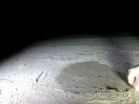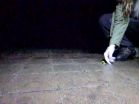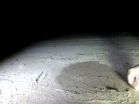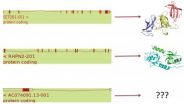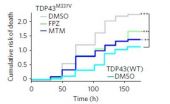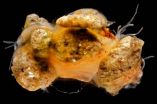(Press-News.org) VIDEO:
Tree frogs reach great heights with their jumps, but do not cover much distance.
Click here for more information.
A frog's jump is not as simple as it seems....Australian scientists have discovered that different species adopt different jumping styles depending on their environment.
Lead researcher, Miss Marta Vidal-Garcia ( PhD candidate, Australian National University ), found that tree dwelling frogs reached great heights but didn't cover much distance with their jumps. Aquatic frogs, meanwhile, jumped very long distances but remained close to the ground. On the other hand, the jumps of burrowing frogs were low both in height and distance. The scientists used high speed video cameras to film the jumps of approximately 230 wild frogs, from 30 different species. 'We searched actively for the frogs at night after heavy rains during their breeding season, as they are more likely to be active', Miss Vidal-Garcia said. The frogs were caught by hand and filmed in the field with two high-speed filming cameras in order to get a Three-Dimensional view of their jumps. The videos were then analysed frame by frame by computer software and variables including height, distance and speed were measured. The results showed that frogs from different habitats adopt distinct jumping styles.
VIDEO:
Burrowing frogs have short limbs and squat bodies, restricting their jumping ability.
Click here for more information.
Frogs from different habitats also had distinct shapes. 'Burrowing frogs have very squat bodies and short limbs' explained Miss Vidal-Garcia. 'This is because they tend to occupy arid environments so this helps to minimise water loss through their permeable skin. The aquatic frogs, however, have more streamlined bodies with longer limbs to improve swimming ability'.
Miss Vidal-Garcia added 'In the future, I am hoping to do more fieldwork so that I can collect data from fifty species and cover all the Australian frog clades. I also want to investigate how the shape of the pelvis influences jumping style'.
INFORMATION:
Jump to it! A frog's leaping style depends on the environment
2014-07-03
ELSE PRESS RELEASES FROM THIS DATE:
Study finds higher risk for celiac disease in some children
2014-07-03
AURORA, Colo. (July 3, 2014) – Physicians from the University of Colorado School of Medicine in collaboration with an international team of researchers have demonstrated that screening of genetically susceptible infants can lead to the diagnosis of celiac disease at a very early age.
The collaborative group studied 6,403 children with specific genetic markers from birth to identify the factors involved in the development of both celiac disease and type 1 diabetes. The children are from the United States, Finland, Germany and Sweden and are part of The Environmental Determinants ...
Biological signal processing: Body cells -- instrumentalists in a symphony orchestra
2014-07-03
Every organism has one aim: to survive. Its body cells all work in concert to keep it alive. They do so through finely tuned means of communication. Together with cooperation partners from Berlin and Cambridge, scientists at the Luxembourg Centre for Systems Biomedicine (LCSB) of the University of Luxembourg have now successfully revealed for the first time the laws by which cells translate signals from their surroundings into internal signals. Like an isolated note in a symphony orchestra, an isolated signal in the cell is of subordinate importance. "What is important ...
A CNIO team reduces the size of the human genome to 19,000 genes
2014-07-03
How nutrients are metabolised and how neurons communicate in the brain are just some of the messages coded by the 3 billion letters that make up the human genome. The detection and characterisation of the genes present in this mass of information is a complex task that has been a source of ongoing debate since the first systematic attempts by the Human Genome Project more than ten years ago.
A study led by Alfonso Valencia, Vice-Director of Basic Research at the Spanish National Cancer Research Centre (CNIO) and head of the Structural Computational Biology Group, and ...
Could boosting brain cells' appetites fight disease? New research shows promise
2014-07-03
ANN ARBOR, Mich. — Deep inside the brains of people with dementia and Lou Gehrig's disease, globs of abnormal protein gum up the inner workings of brain cells – dooming them to an early death.
But boosting those cells' natural ability to clean up those clogs might hold the key to better treatment for such conditions.
That's the key finding of new research from a University of Michigan Medical School physician scientist and his colleagues in California and the United Kingdom. They reported their latest findings this week in the journal Nature Chemical Biology.
Though ...
Ironing out details of the carbon cycle
2014-07-03
Iron is present in tiny concentrations in seawater. On the order of a few billionths of a gram in a liter.
"I did a calculation once on a ton of ocean water," says Seth John, an assistant professor in the department of marine science at the University of South Carolina. "The amount of iron in that ton of water would weigh about as much as a single eyelash."
Given that there is so little iron in seawater, one might conclude that its presence there is inconsequential.
Hardly. Iron is one of the essential elements of life. Found in enzymes like myoglobin and hemoglobin ...
Science Elements podcast highlights the science of fireworks
2014-07-03
The July feature of Science Elements, the American Chemical Society's (ACS') weekly podcast series, shines the spotlight on the science of fireworks, just in time for the July 4th holiday. The episode is available at http://www.acs.org/scienceelements.
Independence Day is a time for picnics, parades and, of course, fireworks. Those beautiful explosions in the sky would be nothing without chemistry. In today's episode, Science Elements talks to the man who literally wrote the book on fireworks.
"Everything you see in a fireworks display is chemistry in action," says ...
Decade of benefits for the Great Barrier Reef
2014-07-03
With this week marking the tenth anniversary of the rezoning of the Great Barrier Reef Marine Park, prominent marine scientists from around the world have gathered in Canberra to discuss its successes - both expected and unexpected.
"At the time, the rezoning of the Great Barrier Reef Marine Park was the largest marine conservation measure in the world," says Professor Garry Russ from the ARC Centre of Excellence for Coral Reef Studies (Coral CoE). "The Reef went from being five percent protected to about 30 percent. So now, a third of it is green, or no-take, zones."
Designed ...
Lessons from the west: Great Barrier Reef in danger
2014-07-03
Scientists at a coral reef symposium in Canberra this week are examining degraded reefs off the Northwest Australian coast in an effort to determine what lies ahead for the Great Barrier Reef.
"Reefs north of Exmouth have experienced large-scale bleaching in the past five years," says Professor Malcolm McCulloch from the ARC Centre of Excellence for Coral Reef Studies (Coral CoE) at the University of Western Australia.
McCulloch is in the midst of an autopsy of this Pilbara bleaching event, collecting and analysing both living and dead stony coral. He says the bleaching ...
Forecasting the development of breakthrough technologies to enable novel space missions
2014-07-03
A new report, Technological Breakthroughs for Scientific Progress (TECHBREAK), has been published today by the European Science Foundation.
The European Science Foundation (ESF) was contacted at the end of 2009 to conduct a foresight activity for the European Space Agency (ESA), addressing the matter of technological breakthroughs for space originating in the non-space sector. A "Forward Look" project jointly funded by ESA and ESF and called 'TECHBREAK' was initiated as a result. Its goals were to forecast the development of such breakthrough technologies to enable novel ...
Researchers from the UCA prove the existence of large accumulations of plastic in all of the oceans
2014-07-03
Researchers from the University of Cadiz have made an unprecedented discovery: they have shown that there are five large accumulations of plastic debris in the open oceans, coinciding with the five main ocean gyres in the surface waters of the ocean. As well as the well-known accumulation of plastic rubbish in the North Pacific, these experts have proven the existence of similar accumulations in the centre of the North Atlantic, the South Pacific, the South Atlantic and the Indian Oceans. And they have gone one step further to state that the surface water of the centre ...
